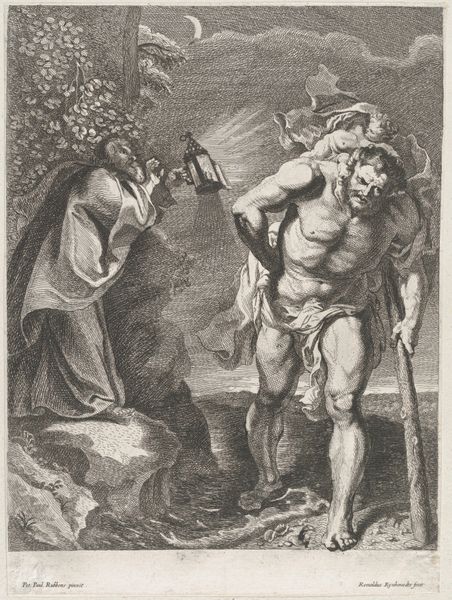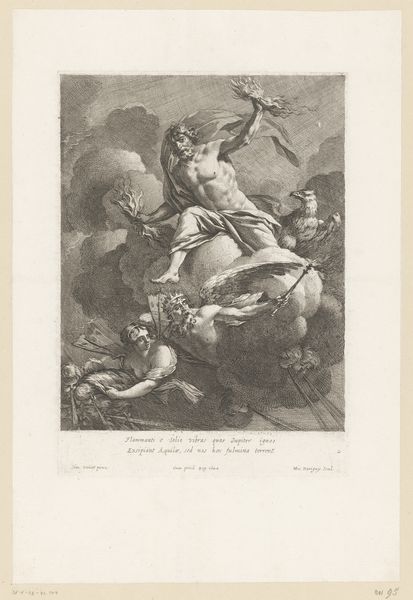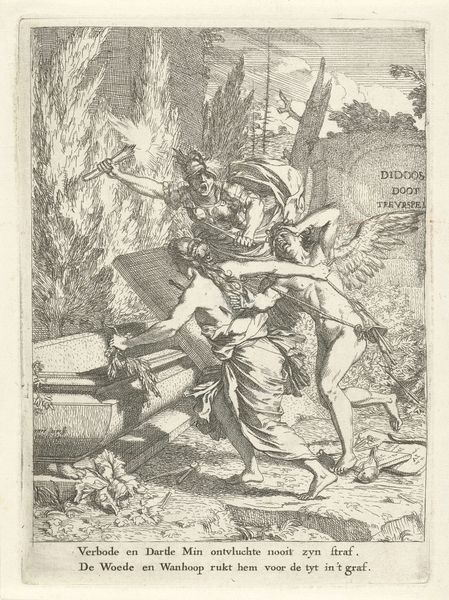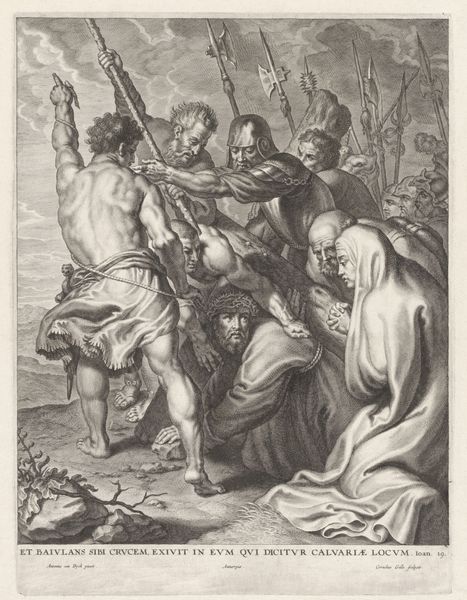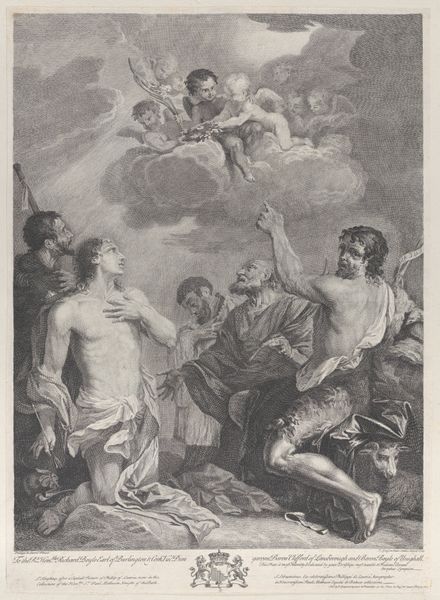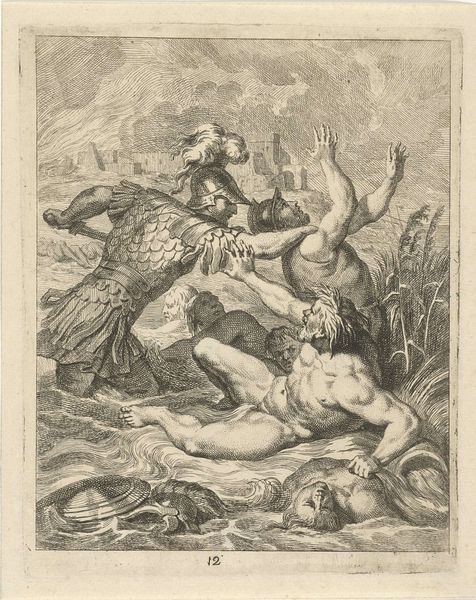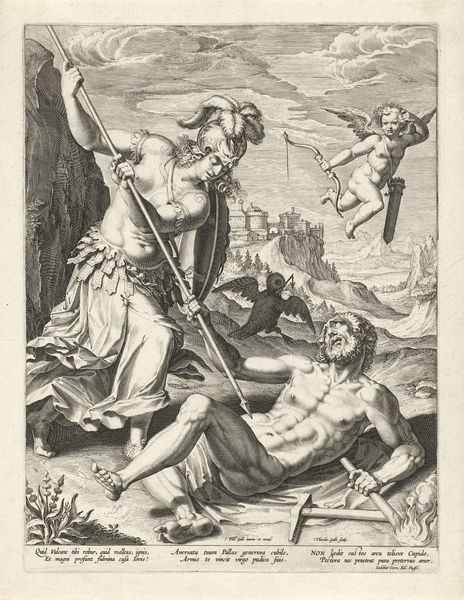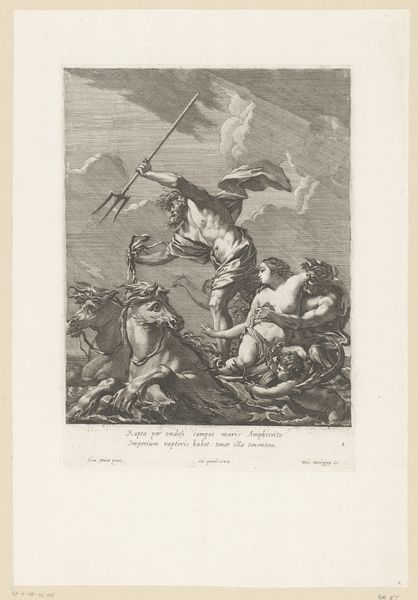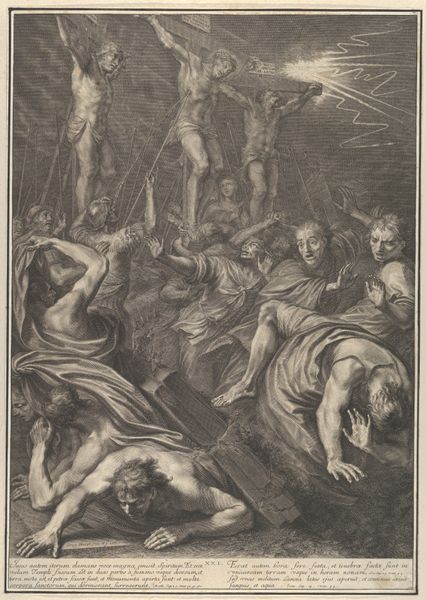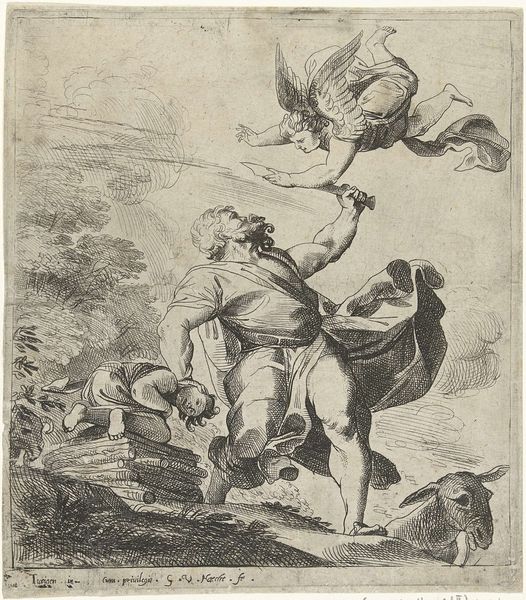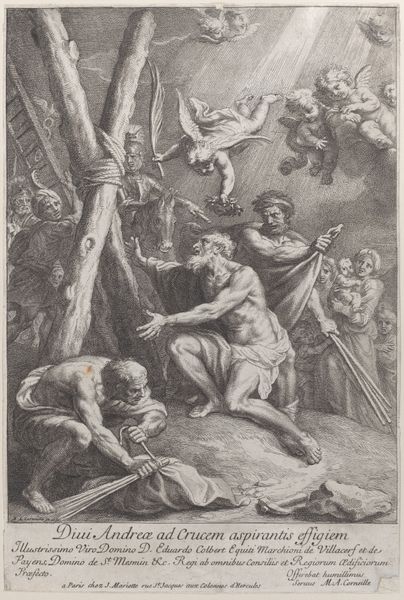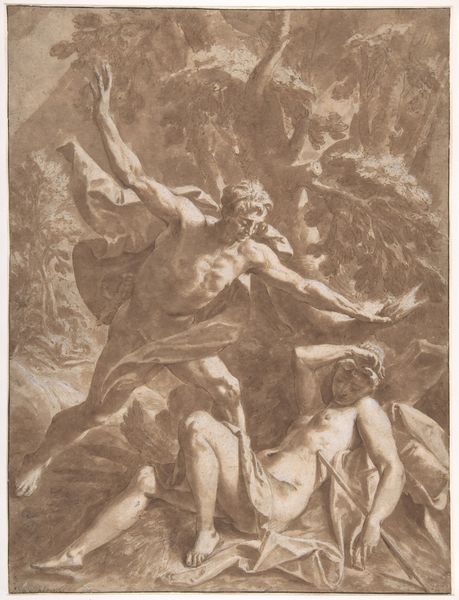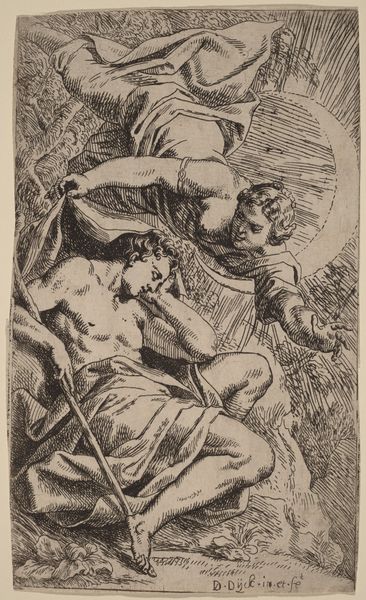
drawing, print, engraving
#
drawing
#
narrative-art
# print
#
figuration
#
15_18th-century
#
history-painting
#
academic-art
#
engraving
Dimensions: Sheet: 8 13/16 x 6 in. (22.4 x 15.2 cm)
Copyright: Public Domain
This print, "Killing an Enemy," was made in 1772 by Robert Blyth using etching and engraving. These are both intaglio processes, meaning that the image is incised into a metal plate – usually copper. Ink is then forced into the recesses, and the surface wiped clean, before the image is transferred to paper under great pressure. Look closely, and you can see how the material qualities of the metal matrix affect the image. Notice the fine, precise lines, achieved by carefully drawing into the metal, and the areas of tone created by cross-hatching. This meticulous and time-consuming work was typical of printmaking at the time. Consider the social context of this image. The making of prints was closely tied to the development of capitalism, as it allowed for the mass production and distribution of images. In a sense, Blyth was an early content creator, responding to a market demand for dramatic scenes. Appreciating the craft and labor involved in printmaking helps us understand its role in shaping visual culture.
Comments
No comments
Be the first to comment and join the conversation on the ultimate creative platform.
